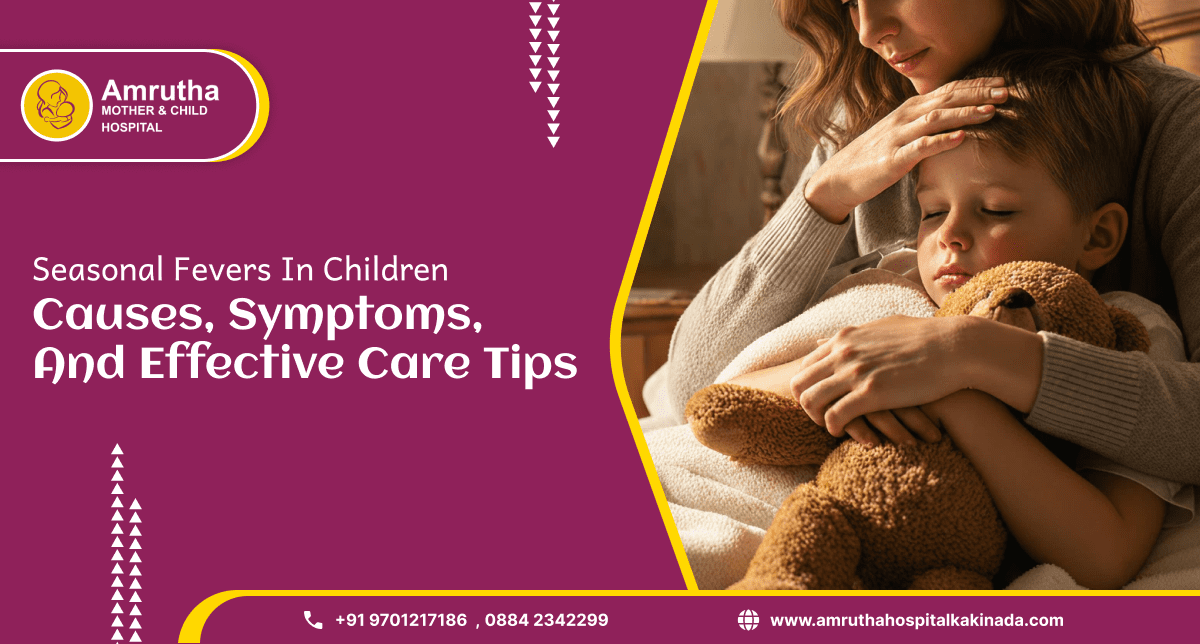Seasonal changes often bring an increase in fevers among children. While mild fevers can be part of the body’s natural immune response, frequent or prolonged fevers require careful monitoring. Understanding the causes, identifying symptoms early, and knowing how to manage seasonal fevers are crucial for keeping children healthy and preventing complications.
Common Causes of Seasonal Fevers in Children
- Viral Infections:
- Influenza, common cold, and other seasonal viruses are the most common causes of fever.
- Bacterial Infections:
- Ear infections, strep throat, or urinary tract infections can trigger fever.
- Environmental Factors:
- Sudden temperature changes, exposure to cold or rainy weather, and damp conditions can make children more susceptible to infections.
- Sudden temperature changes, exposure to cold or rainy weather, and damp conditions can make children more susceptible to infections.
- Weakened Immunity:
- Children’s immune systems are still developing, making them more prone to seasonal illnesses.
Recognizing Symptoms of Seasonal Fevers
- Elevated body temperature (mild to high fever)
- Chills or shivering
- Fatigue, irritability, or lethargy
- Loss of appetite
- Cough, cold, or sore throat
- Body aches or headaches
Red Flag Symptoms to Watch For:
- Persistent high fever above 104°F (40°C)
- Breathing difficulties
- Severe dehydration or not urinating enough
- Unresponsiveness or extreme lethargy
- Rash that spreads rapidly or looks unusual
Effective Care Tips for Parents
- Monitor Temperature: Use a digital thermometer to track your child’s fever.
- Ensure Hydration: Offer plenty of fluids such as water, soups, or oral rehydration solutions.
- Rest and Comfort: Encourage adequate sleep and light clothing to help regulate body temperature.
- Medication: Use fever-reducing medications like paracetamol or ibuprofen only as recommended by a pediatrician.
- Balanced Nutrition: Provide light, nutritious meals to support immunity.
- Hygiene Practices: Teach regular handwashing, avoid sharing utensils, and maintain clean surroundings.
- When to See a Doctor: Seek immediate medical attention if fever persists more than 3 days or if red-flag symptoms appear.
Preventive Measures for Seasonal Fevers
- Vaccinations: Ensure children receive recommended vaccines for influenza and other preventable diseases.
- Healthy Lifestyle: Encourage a balanced diet, physical activity, and adequate sleep to boost immunity.
- Avoid Crowded Places During Peak Seasons: Helps reduce exposure to contagious illnesses.
- Environmental Care: Dress children appropriately for weather changes and maintain home hygiene.
Conclusion
Seasonal fevers are common in children but are usually manageable with careful observation and proper care. Early detection, appropriate hydration, rest, and timely medical consultation are key to preventing complications. By following preventive measures and supporting a child’s immune health, parents can help their children navigate seasonal illnesses safely. Contact Us


